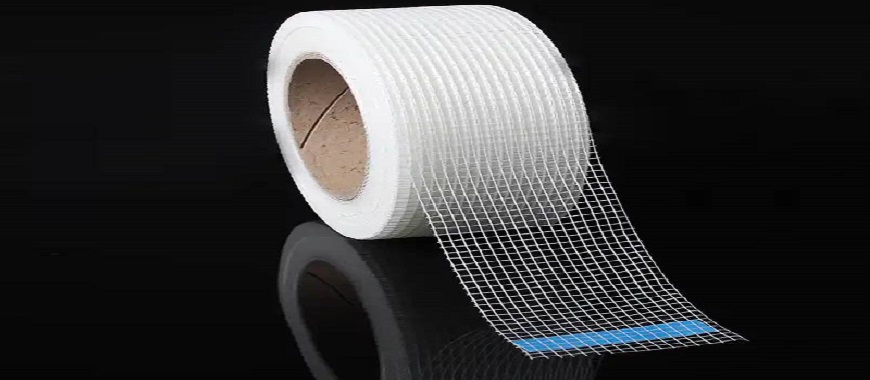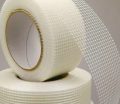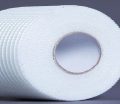
Fiberglass electrical insulations plays a crucial role in modern electrical and industrial applications. This type of insulation, made from fine glass fibers, provides exceptional protection against electrical hazards, ensuring safe operation of equipment. Its significance lies in its ability to effectively prevent electrical current leakage and reduce the risk of short circuits. The key advantages of fiberglass electrical insulations include superior heat resistance, making it ideal for high-temperature environments. Additionally, its durability ensures long-lasting performance under harsh conditions, while its electrical non-conductivity guarantees that it will not interfere with electrical signals or create a conductive path. This combination of qualities makes fiberglass electrical insulation a top choice for various electrical systems and devices.
What is Fiberglass Electrical Insulation?
Definition
Fiberglass electrical insulations is a specialized material composed of fine glass fibers engineered to serve as an effective barrier against electrical currents. It is designed to prevent electricity from traveling along unintended paths, thereby reducing the risk of short circuits, electrical shocks, and fires. This insulation plays a critical role in ensuring the safety and reliability of electrical systems by offering high resistance to electrical conductivity. Its unique properties make it an indispensable component in a wide range of electrical and industrial applications.
Key Characteristics of the Definition:
- Electrical Protection: Fiberglass electrical insulations prevents current leakage, safeguarding both the equipment and users.
- Safety Enhancement: By acting as a protective layer, it minimizes the risk of electrical accidents.
- Versatility: Suitable for various applications, including wiring, transformers, and electronic devices.
- High Performance: Ensures stability and efficiency even under demanding conditions.
Composition and Structure
- Base Material:
Fiberglass electrical insulations primarily consists of woven mats made from fine glass fibers. These mats form the foundational layer, offering flexibility and strength. - Reinforcement Materials:
To enhance its performance, the fiberglass base is often reinforced with epoxy resin. This reinforcement adds rigidity and improves resistance to wear, making it ideal for long-term use. - Coatings and Treatments:
Additional coatings, such as silicone or heat-resistant materials, are applied to improve durability against extreme temperatures, mechanical stress, and chemical exposure. These treatments also enhance the insulation’s ability to resist moisture and maintain performance in adverse environments. - Lightweight Yet Strong:
The inherent structure of fiberglass ensures a combination of lightweight properties and robust strength. This allows the insulation to be used in applications requiring minimal added weight, such as aircraft or portable electrical devices. - Thermal and Mechanical Resistance:
Fiberglass electrical insulation is designed to endure high-temperature environments and withstand significant mechanical stress, making it suitable for industrial machinery, high-voltage systems, and other demanding conditions. - Environmental Adaptability:
Its resilience to corrosion, UV exposure, and moisture makes fiberglass insulation highly adaptable for both indoor and outdoor use. This ensures reliable performance across diverse industries, from construction to electronics.
By combining the unique qualities of fine glass fibers with robust reinforcement and specialized coatings, fiberglass electrical insulations stands out as a versatile, durable, and effective solution for modern electrical needs.
Is Fiberglass Flammable? Debunking Common Fire Safety Myths
Key Features and Benefits of Fiberglass Electrical Insulation
Fiberglass electrical insulations offers a wide range of features that make it highly valued in both electrical and industrial applications. Its unique combination of physical and electrical properties allows it to provide long-lasting protection and performance. Below, we outline the key features and benefits of this versatile material.
Key Features and Benefits
- Thermal Resistance: Fiberglass electrical insulations is known for its high-temperature tolerance. This makes it ideal for use in environments where equipment generates significant heat, such as transformers, motors, and other heat-generating systems. Its ability to withstand extreme temperatures without degrading ensures consistent performance even in challenging conditions.
- Electrical Insulation: One of the primary benefits of fiberglass tape for electrical insulation is its excellent electrical non-conductivity. This property helps prevent short circuits and reduces the risk of electrical hazards, making it an essential material for safeguarding electrical systems and components.
- Durability: Fiberglass electrical insulations is highly resistant to a wide range of external factors. It resists chemical degradation, corrosion, and mechanical wear, ensuring that it remains functional and effective for a prolonged period. This makes it an ideal choice for applications in harsh industrial environments where other materials might fail.
- Fire Resistance: Another key advantage of fiberglass electrical insulation is its self-extinguishing properties. In the event of a fire, fiberglass insulation will not contribute to the spread of flames, helping to ensure safety in critical applications. This feature is particularly important in systems where fire safety is a major concern, such as in electrical panels or motor windings.
- Lightweight and Versatile: Despite its impressive strength, fiberglass electrical insulations is lightweight and easy to install. Its versatility allows it to be used in a variety of configurations, offering a high level of adaptability to meet the needs of different electrical systems. Whether in small electronic devices or large industrial machines, fiberglass electrical insulations provides reliable protection without adding significant weight or bulk.
These features make fiberglass electrical insulations a go-to material in a wide array of industries, offering both safety and efficiency in electrical applications.
Flexible Fiberglass: Key Benefits for Manufacturing Industries
Applications of Fiberglass Electrical Insulation
Fiberglass electrical insulations is widely used across various industries due to its exceptional properties, such as thermal resistance, electrical non-conductivity, and durability. Its ability to provide reliable protection in harsh environments has made it a preferred choice for a range of applications, from industrial machinery to electronics. Below, we explore the primary uses of fiberglass electrical insulation in different sectors.
Industrial Use
Fiberglass electrical insulations is commonly used in industrial settings to protect machinery, cables, and generators. Its ability to withstand high temperatures and resist wear and tear makes it particularly valuable for insulating equipment that operates under extreme conditions. In factories and manufacturing plants, fiberglass electrical insulations ensures that motors, electrical wiring, and other critical components are safely insulated, preventing electrical shorts and enhancing operational efficiency.
Construction
In construction, fiberglass electrical insulations is often employed as a fire-resistant material for walls and electrical installations. Its fire-retardant properties help prevent the spread of flames, which is crucial in buildings where electrical systems are integral to the structure. Fiberglass electrical insulations is also used in various fire protection systems to safeguard both the building and the people inside. Its combination of lightweight construction and high performance ensures that it is adaptable to diverse building requirements.
Electronics
Fiberglass electrical insulation plays a significant role in electronics, particularly in circuit boards and electronic components. It is used to manage thermal heat in sensitive electronic devices, preventing components from overheating and ensuring optimal functionality. The non-conductive nature of fiberglass electrical insulation also provides protection against electrical interference, helping to maintain the integrity of electronic signals in devices like computers, mobile phones, and other high-tech equipment.
Power Systems
Fiberglass electrical insulation is indispensable in power systems, particularly for insulating transformers, switchgear, and high-voltage systems. It offers protection from electrical faults and external environmental factors, ensuring the safety and efficiency of power distribution. In these applications, fiberglass electrical insulation not only enhances the performance of electrical systems but also extends the lifespan of expensive equipment by minimizing the risk of breakdowns due to electrical surges or extreme weather conditions.
These diverse applications highlight the versatility and reliability of fiberglass electrical insulation, making it an essential material in industries ranging from heavy machinery to advanced electronics and power distribution systems.
Facts About Loose Fill Fiberglass Insulation Benefits
Types of Fiberglass Electrical Insulation
Fiberglass electrical insulation comes in various forms, each suited to specific applications based on its properties. These different types of fiberglass electrical insulation offer distinct advantages, such as enhanced thermal resistance, mechanical strength, and electrical protection. Below, we explore the most common types and their uses in various industries.
GPO3 Fiberglass Sheets
GPO3 fiberglass sheets are widely used for electrical panels and switchgear due to their remarkable mechanical strength and insulating properties. These sheets are composed of a glass fiber mat that is impregnated with a resin, providing both electrical insulation and structural integrity. GPO3 fiberglass sheets are ideal for high-voltage environments where durable, non-conductive materials are necessary to ensure the safe operation of electrical systems. Their high resistance to heat and mechanical stress makes them an excellent choice for use in industrial electrical equipment that operates under challenging conditions.
Fiberglass Sleeving
Fiberglass sleeving is another popular form of fiberglass electrical insulation, commonly used to protect wires and cables. This type of insulation is flexible and can be easily applied to wires of varying sizes. Fiberglass sleeving provides excellent protection against high temperatures, making it suitable for use in industries where cables are exposed to heat, such as in automotive, aerospace, and electronics. Additionally, fiberglass sleeving offers outstanding resistance to abrasion, chemicals, and environmental factors, ensuring long-lasting protection for electrical wiring in harsh conditions.
Laminated Fiberglass Boards
Laminated fiberglass boards are a common type of fiberglass electrical insulation used in circuit boards and structural insulation applications. These boards are made by laminating layers of fiberglass fabric with resin to create a solid, durable material that provides both electrical insulation and physical strength. Laminated fiberglass boards are frequently used in the construction of electrical control panels, circuit boards, and other electronic devices, where both insulation and mechanical support are required. They offer excellent resistance to high temperatures and electrical breakdown, making them essential components in a variety of electrical and industrial applications.
Each type of fiberglass electrical insulation is specifically designed to meet the needs of different industries and applications, ensuring safe, reliable performance in a wide range of electrical systems.
How to Choose the Right Fiberglass Electrical Insulation
Choosing the right fiberglass electrical insulation is crucial for ensuring the safety, efficiency, and longevity of electrical systems. There are several factors to consider when selecting the appropriate type of fiberglass electrical insulation for a specific application. Below, we outline the key considerations that should guide your decision-making process.
Temperature Rating
One of the most important factors to consider when choosing fiberglass electrical insulation is its temperature rating. The insulation must be able to withstand the heat generated by the electrical components it is protecting. Different applications may require insulation with varying degrees of heat resistance, so it’s essential to select fiberglass electrical insulation that matches the temperature range of your system. For example, applications in high-voltage transformers, motors, or other heat-generating equipment will require insulation with a higher temperature tolerance. Always verify the insulation’s heat resistance to ensure it performs effectively and prevents overheating, which can lead to equipment failure or safety hazards.
Thickness and Size
The thickness and size of fiberglass electrical insulation are also critical factors in choosing the right material for a project. The insulation should be selected based on the specific dimensions required for the application, taking into account the size of the cables, components, or panels that need protection. For example, thick insulation may be needed for high-voltage systems or heavy-duty industrial machinery, while thinner insulation might be suitable for smaller electronic devices. It’s important to balance the required level of protection with the practical considerations of space and weight. Proper sizing ensures that the fiberglass electrical insulation will provide the necessary coverage and electrical safety without being too bulky or difficult to install.
Certification
Before choosing fiberglass electrical insulation, it’s essential to verify that the material meets the necessary industry certifications and safety standards. These certifications ensure that the insulation complies with electrical and fire safety regulations. Look for fiberglass electrical insulation that has been tested and approved by relevant authorities such as UL (Underwriters Laboratories) or IEC (International Electrotechnical Commission). Compliance with these standards guarantees that the insulation will perform reliably and safely in the intended application. Choosing certified fiberglass electrical insulation also provides peace of mind, knowing that the material has undergone rigorous testing for durability, electrical performance, and fire resistance.
By considering factors such as temperature rating, thickness and size, and certification, you can ensure that the fiberglass electrical insulation you choose is well-suited to your project’s specific needs, providing reliable protection and performance.
FAQs about Fiberglass Electrical Insulation
Yes, fiberglass is an excellent electrical insulator and is widely used in the electrical and electronics industries for its high resistance to electrical currents. The material itself is made of fine glass fibers, which are non-conductive, preventing the flow of electricity through them. This makes fiberglass an ideal choice for insulating electrical components such as wires, circuit boards, transformers, and electrical panels. In addition to being non-conductive, fiberglass electrical insulation also provides other benefits, such as high thermal resistance, making it suitable for use in high-temperature environments. Fiberglass is also durable, resistant to moisture, and has strong mechanical properties, which contribute to its effectiveness in electrical insulation. However, while fiberglass electrical insulation is effective in preventing electrical hazards, it must be used correctly, as improper installation can lead to reduced performance and safety risks.
Yes, fiberglass insulation can be used around electrical wires, and it is commonly done in various applications where heat resistance and electrical safety are paramount. Fiberglass sleeving, for instance, is specifically designed to protect wires and cables from damage caused by high temperatures, abrasion, and environmental factors. The non-conductive properties of fiberglass ensure that the electrical current does not leak or cause short circuits when properly installed. Fiberglass insulation around electrical wires is particularly useful in applications such as automotive wiring, aerospace systems, and high-voltage electrical equipment. However, it is important to ensure that the fiberglass insulation is applied correctly and meets the required standards for temperature tolerance and mechanical strength to ensure safety and optimal performance. In some cases, fiberglass may be used in combination with other types of insulation for enhanced protection, particularly in high-heat or high-stress environments.
The biggest problem with fiberglass insulation, especially in residential and industrial applications, is its potential health risks when it is disturbed. Fiberglass insulation is composed of fine glass fibers that can irritate the skin, eyes, and respiratory system when they become airborne. This can occur during installation, removal, or when the insulation is damaged. Prolonged exposure to fiberglass particles can lead to respiratory issues and skin irritation, making proper handling and protective gear essential during installation and maintenance. Additionally, fiberglass insulation is not as effective at soundproofing compared to other materials, which could be a consideration in specific applications where noise reduction is important. Another issue is that fiberglass insulation can lose its effectiveness over time if it becomes wet or damp, as the material can absorb moisture, leading to a reduction in thermal performance. Therefore, while fiberglass insulation is highly effective in many situations, care must be taken to avoid health risks and ensure its longevity in humid or damp environments.
A significant disadvantage of fiberglass insulation is its environmental impact, particularly during its production and disposal. Fiberglass manufacturing involves the use of energy-intensive processes and raw materials such as silica and boron, which can contribute to environmental degradation if not properly managed. Additionally, fiberglass insulation is not biodegradable, and when disposed of improperly, it can contribute to landfill waste. The production process also involves the release of volatile organic compounds (VOCs), which can harm the environment. Moreover, fiberglass insulation tends to be less effective in very damp or wet conditions. While it is highly resistant to moisture under normal conditions, fiberglass can lose its thermal insulating properties if it absorbs water, becoming less efficient over time. This is particularly concerning in areas with high humidity or where the insulation could be exposed to water leaks. As a result, some prefer alternative materials that offer better moisture resistance or sustainability for specific applications.

As the editor of GangLong Fiberglass, I have years of experience and in-depth research, focusing on cable tray products, fiberglass solutions, and grille systems. I incorporate years of industry insights and practical experience into every content, committed to promoting the progress of the industry. At GangLong Fiberglass, my commitment is reflected in every product, from innovative cable trays to durable fiberglass solutions and sturdy grille systems. As an authoritative voice in the industry, my goal is to provide valuable information to professionals and businesses and promote forward-looking solutions.


